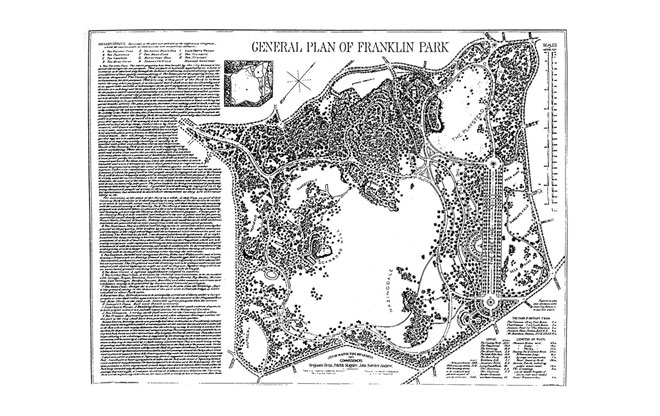
General Plan for Franklin Park, 1885
“The entire property has been bought by the city because of its special advantages for one purpose. That purpose is to provide opportunity for a form of recreation to be obtained only through the influence of pleasing natural scenery upon the sensibilities of those quietly contemplating it. The larger part of the property, being the division designated 'The Country Park, is proposed to be set apart with absolute exclusiveness, for this purpose.” -- Notes on the 1885 General Plan of Franklin Park.
Image: Frederick Law Olmsted National Historic Site
Revised General Plan for Franklin Park, 1891
The 100-acre country meadow is the central and most important landscape of the park. Franklin Park is often compared to the Great Lawn in Brooklyn’s Prospect Park. They are two truly great landscapes designed by Olmsted in the pastoral style.
Image: Frederick Law Olmsted National Historic Site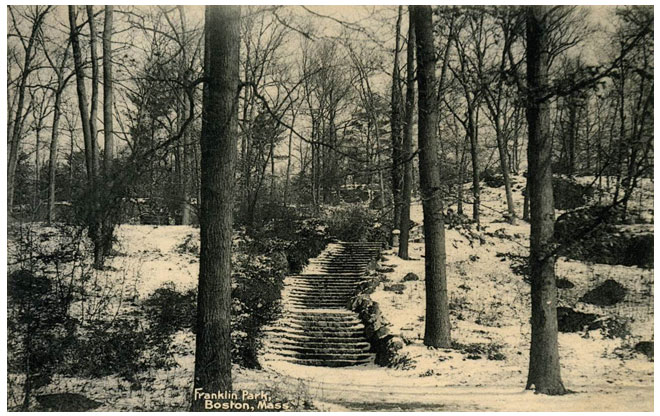
Rustic 99 Steps in the Wilderness
Image: Margaret Dyson 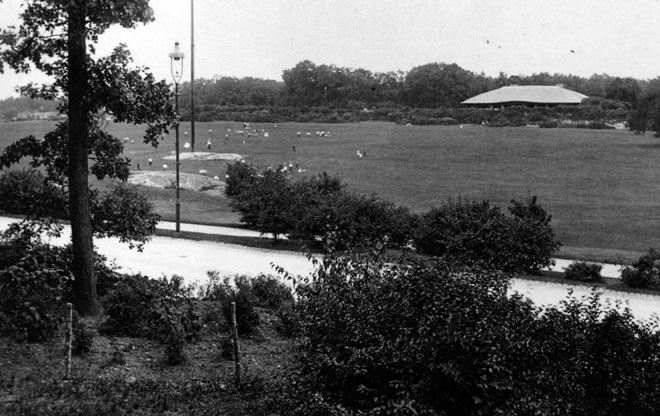
Overlook Shelter and Playstead in the Ante Park, 1900
Image: Frederick Law Olmsted National Historic Site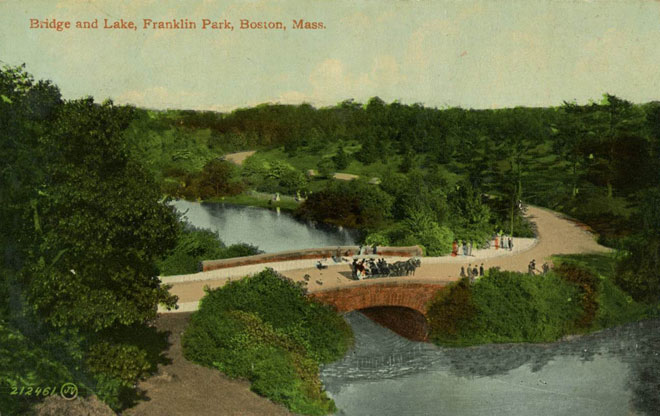
Scarboro Pond and Bridge, 1905
Image: Margaret Dyson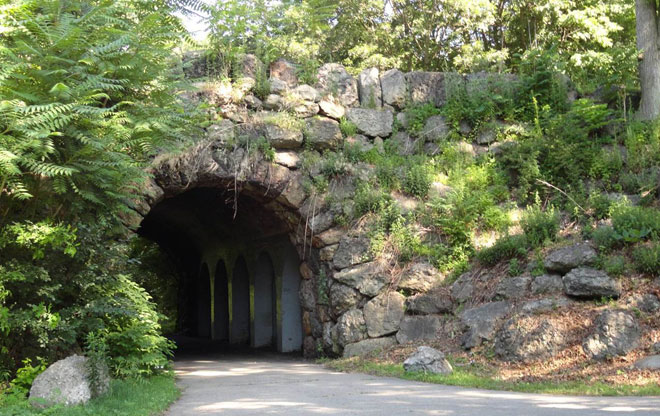
Ellicott Arch
Image: Marion Pressley 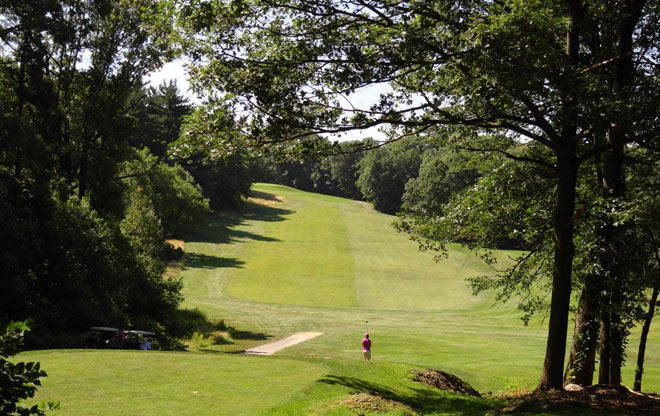
Golf at Ellicottdale
By 1890, Franklin Park was appropriated for use as a golf course, the first one in the city and the second in the nation. The course opened in 1896. The 18-hole layout was redesigned by the world’s premier golf landscape architect Donald J. Ross. In the words of Jack Nicklaus, Ross designed golf courses that led to positive thinking. "His stamp as an architect was naturalness.''
Image: Marion Pressley 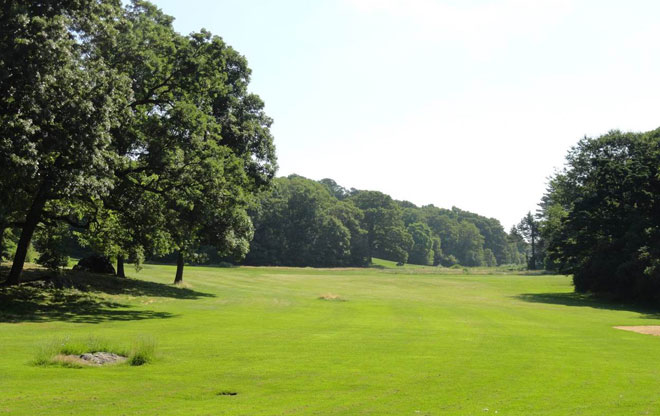
Ellicottdale
A small, broad meadow forming the western extension of the country meadow.
Image: Marion Pressley 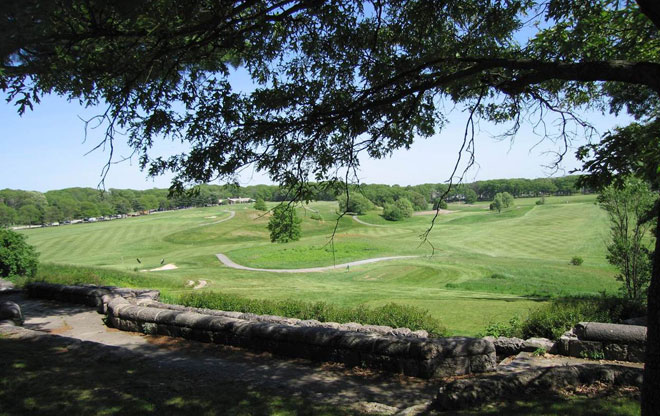
View from Schoolmaster Hill
Beyond golf, athletics available in the park include tennis, baseball, basketball, sledding, rugby, lacrosse, soccer, and even cricket on Sunday afternoons. The park also has a famed cross-country trail hosting a number of high school and collegiate meets throughout the year.
Image: Marion Pressley 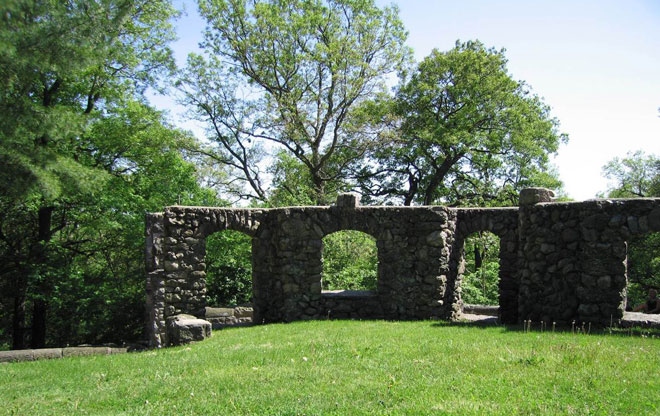
Schoolmaster Hill Ruin
Before the park was designed and built, Ralph Waldo Emerson, a teacher, lived in a cabin on what was later named Schoolmaster Hill. A plaque was placed in his memory.
Image: Marion Pressley